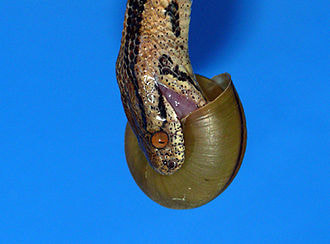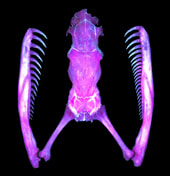|
By Lauren Koenig Left-handedness has long been considered at best, an insult, and at worst, a crime. One of the few skills attributed to "lefties" was the ability to conjure the devil. Only within the past few decades has cultural discrimination against "lefties" been largely overturned in the Western World. Most bias is limited to the uncomfortable design of tools like scissors and musical instruments, mass produced for the 90% “righty” majority. Yet, body asymmetry is far from unnatural - researchers have uncovered a slew of skew throughout the animal kingdom. All primates appear to have some kind of preference, while a majority of kangaroos and about half of mice are left-handed. For some of these species, the difference between being a righty or a lefty is the difference between life or death. A team led by Masakai Hoso at the University of Tokyo traced the genetic origin of left-sided dominance in Satsuma snails, an animal that lacks both hands and feet, and how it protects them against predatory snakes.
Two sides to the story Even though Hoso’s team had a good idea of where this tale ends, they hoped to trace it back to its beginning: where did the lefty gene come from if most snails are righties? Further research into the snails’ distant past indicates that a random mutation must have arisen that twisted shells counterclockwise. This area of DNA must be prone to change because this mutation happened at least six times. If one wobbly gene leaned towards the left frequently enough, then enough lefty snails existed simultaneously to find one another and propagate the line. Modern day snails are more firmly entrenched on either side of the bias line because their shape prevents them from mating with one another. No matter how the snails contort, the location of the shell in proximity to snail genitalia prevents righty and lefty snails from configuring their bodies for successful reproduction. From the perspective of most scientists, this means that the snails are now two different species. Can snakes get a grip? If snails can harness their genetic armor to adapt to predators, it may be just a matter of time (albeit on a long, evolutionary time scale) before snakes respond in kind. It all depends on the snakes’ own genetic material, as well as whether they rely on the snails as their main meal. Snakes may never get their chance though, as decreased habitat, deforestation and a changing climate have placed these animals on the endangered species list. As the quest to understand the relationship between genetics, handedness and body asymmetry in our own species continues, looking to other species may be key to understanding all sides of this story.
0 Comments
Your comment will be posted after it is approved.
Leave a Reply. |
LIFESTYLE BLOGRead our lifestyle advice, written exclusively for pre-professional women in science and engineering. From advice about fashion, work and family balance, self, wellness, and money, we've got you covered! |
The Scientista Foundation, Inc. All Rights Reserved © 2011-2021 | Based in NY | [email protected]
The Network for Pre-Professional Women in Science and Engineering
The Scientista Foundation is a registered 501(c)(3) -- Donate!
The Network for Pre-Professional Women in Science and Engineering
The Scientista Foundation is a registered 501(c)(3) -- Donate!



